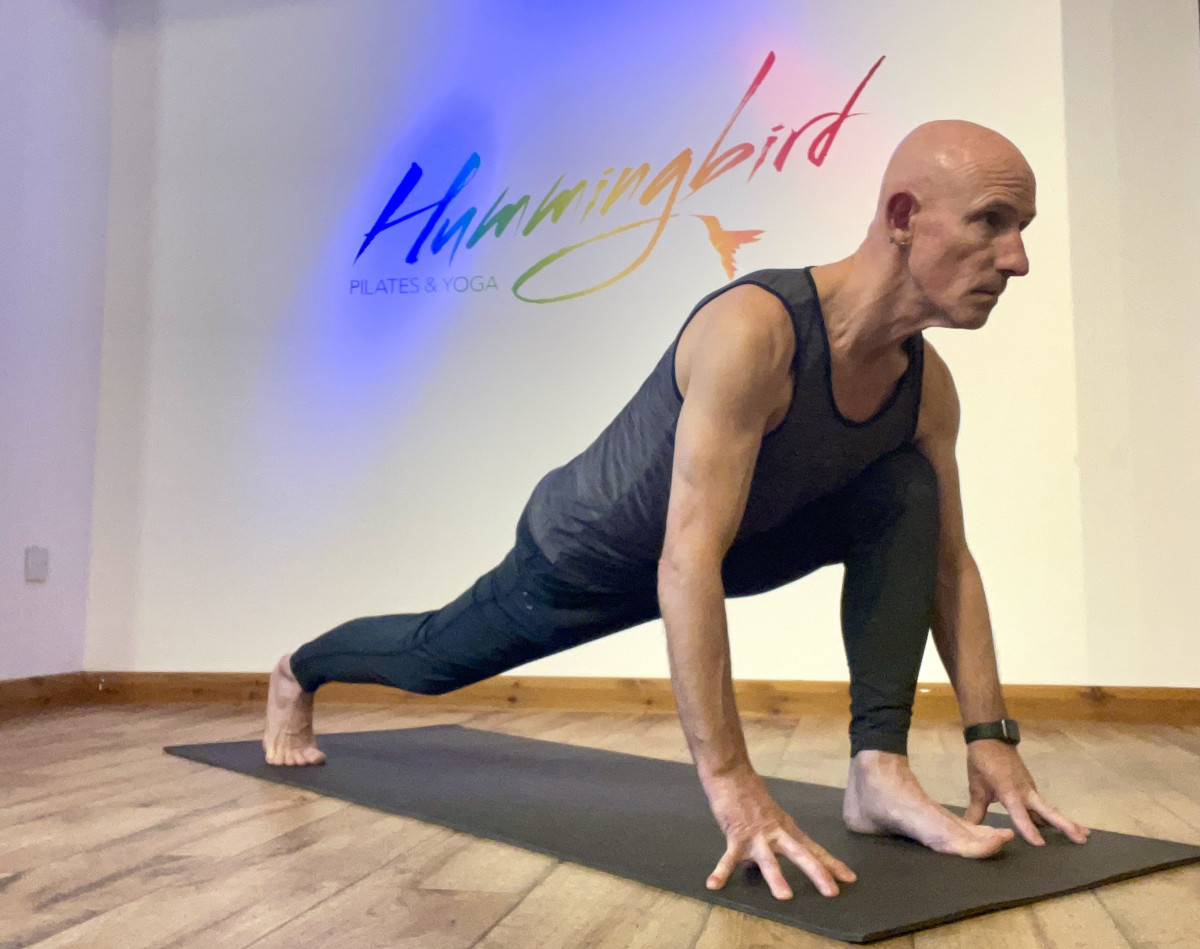High Lung Pose
Written by Steve Johansen April 18, 2024
Banarasana
by Steve Johansen, Hummingbird Pilates and Yoga
This month I'm going to talk about, Banarasana (bana-RAHS-uh-nuh), although if I’m honest, I can’t remember any teacher ever using the Sanskrit name for this pose! In English, the pose is called High Lunge. However, I am aware of other teachers referring to it as: Lunge, or Low Lunge (however for me the latter is a variation). I call it High Lung when your back knee is off the mat and the leg is straight and Low Lunge when the back knee is resting on the mat.
High Lunge for me is much more than just a Yoga pose, as it is used in huge variety of exercise regimes, including Pilates and gym programmes. Why it is so widely utilised is because it is so effective! It developes strength and flexibility, in the core, hips, thighs, and ankles, while improving overall body awareness and balance. In yoga, the reason that this pose is special, is that it is both a stand-alone and a transitional pose. A transition in Yoga is the movement from one pose to another not a mindless break between exercises but a place for awareness and flow from one movement to the next, a dynamic challenge for mind, body and spirit! High lunge also helps to develop the strength and control needed for harder poses such as the jumps backwards and forwards in the Surya Namaskar (Sun Salutation).
I nearly always try to incorporate this pose somewhere within my own practice and always include it in my classes. Often adding variations to the basic pose, with different twists and stretches of the torso, arms, legs, and hips that can be held statically for a few breaths or used as part of a flowing sequence.
Where to start
Start by finding Mountain pose at the front of your mat, standing tall, strong, and immovable like a mountain. Your ankles should be hip with apart. Soften the knees, tuck the tailbone engaging your core, find length and strength in your torso, roll the shoulder blades down your back, find your Drishti. On your next in-breath, sweep the arms upward to Upward Salute. On your out-breath fold forward, bending your knees, into Standing Forward Bend. Your fingertips should be on the mat either side of your feet, head hanging heavily. On your next in-breath, lengthen through the torso and engaging the core, as you move into Half Standing Forward Bend. Keep the strength and length in the torso, bending the knees slightly, and take a big step back with your right foot. Ensure your front knee is directly above your ankle, your fingertips should be either side of your front foot, in line with your toes. If possible lower your hips so they’re the same hight as your front knee, walking your right foot back. Ensure that the legs remain hip width apart. Tuck your toes and press back though the heel, to straighten your right leg. Draw the kneecaps up engaging the quadriceps, tucking your tailbone downward toward your right heel. To engage your core muscles, lift your head and find your Drishti, at eye height directly in fount of you. Draw your sternum forwards while rolling your shoulders backward and towards each other. Try and find the length and strength though the right side of your body, as you did in Mountain pose right at the beginning. Ideally, you should try and hold the pose for three to five breaths. Try to find a little more strength with each inhalation and relax into the pose, with each exhalation.
To come out of High Lunge, ensure your core is engaged and draw yourself forward slightly, to transfer your weight into your left foot, push off with your right toes, as you step forward into Half Standing Forward Bend. Repeat the process on the other side.
For those of you who would like to learn more about the benefits of High Lunge and how to incorporate it into your own practice, I’d like to invite you to join me at my studio, Hummingbird Pilates & Yoga. You can use this free pass code HPYFREECLASS, my gift to you.
Categories
Contact Us
Reeds Farm Estate,
Roxwell Road,
Writtle,
Chelmsford,
Essex, CM1 3ST
Tel: 01245 422 556



